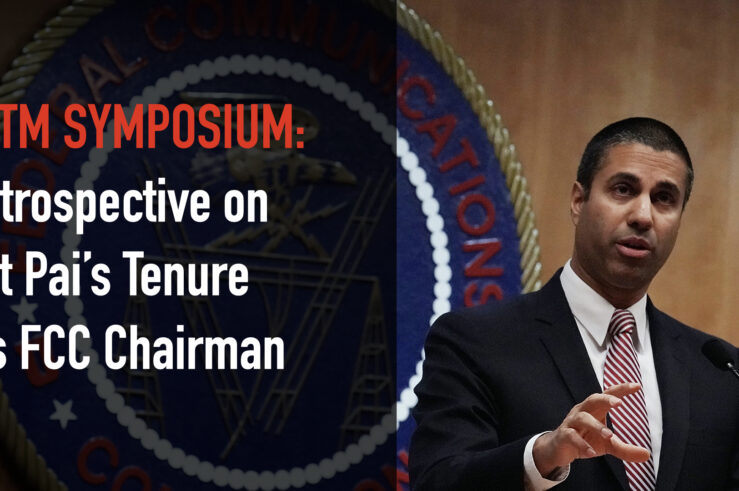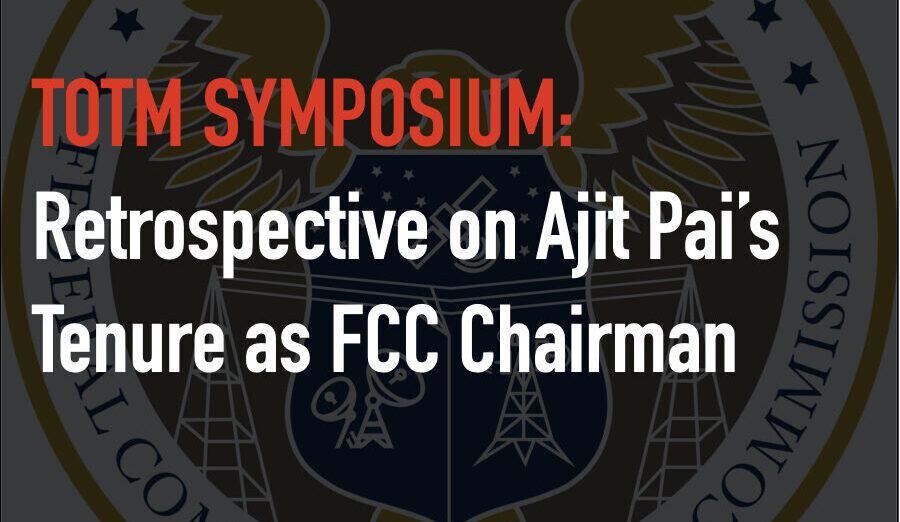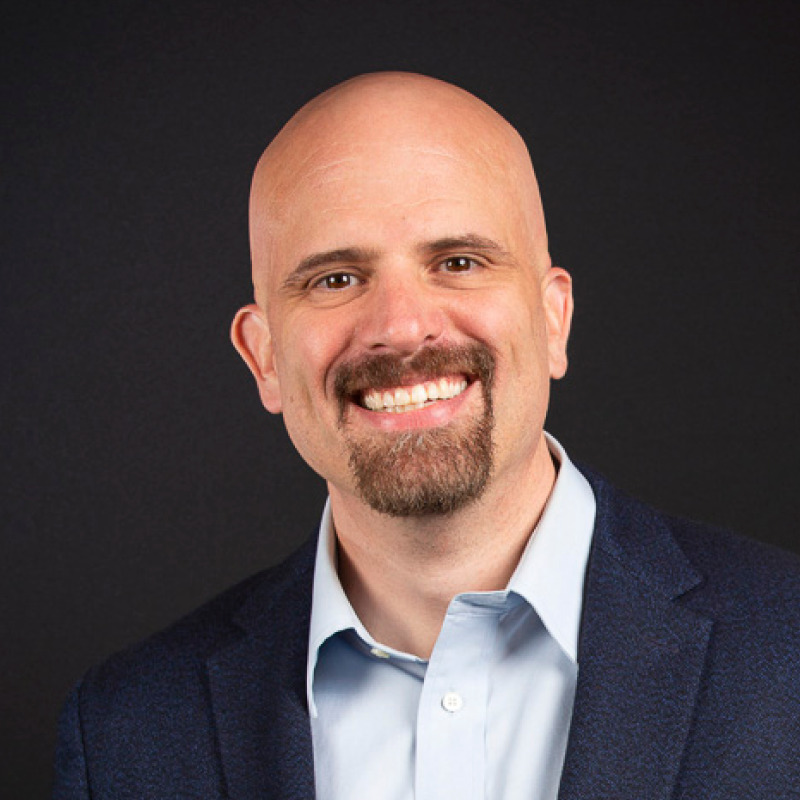
This article is a part of the Retrospective on Ajit Pai's Tenure as FCC Chairman symposium.

One of the themes that has run throughout this symposium has been that, throughout his tenure as both a commissioner and as chairman, Ajit Pai has brought consistency and careful analysis to the Federal Communications Commission (McDowell, Wright). The reflections offered by the various authors in this symposium make one thing clear: the next administration would do well to learn from the considered, bipartisan, and transparent approach to policy that characterized Chairman Pai’s tenure at the FCC.
The following are some of the more specific lessons that can be learned from Chairman Pai. In an important sense, he laid the groundwork for his successful chairmanship when he was still a minority commissioner. His thoughtful dissents were rooted in consistent, clear policy arguments—a practice that both charted how he would look at future issues as chairman and would help the public to understand exactly how he would approach new challenges before the FCC (McDowell, Wright).
One of the most public instances of Chairman Pai’s consistency (and, as it turns out, his bravery) was with respect to net neutrality. From his dissent in the Title II Order, through his commission’s Restoring Internet Freedom Order, Chairman Pai focused on the actual welfare of consumers and the factors that drive network growth and adoption. As Brent Skorup noted, “Chairman Pai and the Republican commissioners recognized the threat that Title II posed, not only to free speech, but to the FCC’s goals of expanding telecommunications services and competition.” The result of giving in to the Title II advocates would have been to draw the FCC into a quagmire of mass-media regulation that would ultimately harm free expression and broadband deployment in the United States.
Chairman Pai’s vision worked out (Skorup, May, Manne, Hazlett). Despite prognostications of the “death of the internet” because of the Restoring Internet Freedom Order, available evidence suggests that industry investment grew over Chairman Pai’s term. More Americans are connected to broadband than ever before.
Relatedly, Chairman Pai was a strong supporter of liberalizing media-ownership rules that long had been rooted in 20th century notions of competition (Manne). Such rules systematically make it harder for smaller media outlets to compete with large news aggregators and social-media platforms. As Geoffrey Manne notes:
Consistent with his unwavering commitment to promote media competition… Chairman Pai put forward a proposal substantially updating the media-ownership rules to reflect the dramatically changed market realities facing traditional broadcasters and newspapers.
This was a bold move for Chairman Pai—in essence, he permitted more local concentration by, e.g., allowing the purchase of a newspaper by a local television station that previously would have been forbidden. By allowing such combinations, the FCC enabled failing local news outlets to shore up their losses and continue to compete against larger, better-resourced organizations. The rule changes are in a case pending before the Supreme Court; should the court find for the FCC, the competitive outlook for local media looks much better thanks to Chairman Pai’s vision.
Chairman Pai’s record on spectrum is likewise impressive (Cooper, Hazlett). The FCC’s auctions under Chairman Pai raised more money and freed more spectrum for higher value uses than any previous commission (Feld, Hazlett). But there is also a lesson in how subsequent administrations can continue what Chairman Pai started. Unlicensed use, for instance, is not free or costless in its maintenance, and Tom Hazlett believes that there is more work to be done in further liberalizing access to the related spectrum—liberalizing in the sense of allowing property rights and market processes to guide spectrum to its highest use:
The basic theme is that regulators do better when they seek to create new rights that enable social coordination and entrepreneurial innovation, rather than enacting rules that specify what they find to be the “best” technologies or business models.
And to a large extent this is the model that Chairman Pai set down, from the issuance of the 12 GHZ NPRM to consider whether those spectrum bands could be opened up for wireless use, to the L-Band Order, where the commission worked hard to reallocate spectrum rights in ways that would facilitate more productive uses.
The controversial L-Band Order was another example of where Chairman Pai displayed both political acumen as well as an apolitical focus on improving spectrum policy (Cooper). Political opposition was sharp and focused after the commission finalized its order in April 2020. Nonetheless, Chairman Pai was deftly able to shepherd the L-Band Order and guarantee that important spectrum was made available for commercial wireless use.
As a native of Kansas, rural broadband rollout ranked highly in the list of priorities at the Pai FCC, and his work over the last four years is demonstrative of this pride of place (Hurwitz, Wright). As Gus Hurwitz notes, “the commission completed the Connect America Fund Phase II Auction. More importantly, it initiated the Rural Digital Opportunity Fund (RDOF) and the 5G Fund for Rural America, both expressly targeting rural connectivity.”
Further, other work, like the recently completed Rural Digital Opportunity Fund auction and the 5G fund provide the necessary policy framework with which to extend greater connectivity to rural America. As Josh Wright notes, “Ajit has also made sure to keep an eye out for the little guy, and communities that have been historically left behind.” This focus on closing the digital divide yielded gains in connectivity in places outside of traditional rural American settings, such as tribal lands, the U.S. Virgin Islands, and Puerto Rico (Wright).
But perhaps one of Chairman Pai’s best and (hopefully) most lasting contributions will be de-politicizing the FCC and increasing the transparency with which it operated. In contrast to previous administrations, the Pai FCC had an overwhelmingly bipartisan nature, with many bipartisan votes being regularly taken at monthly meetings (Jamison). In important respects, it was this bipartisan (or nonpartisan) nature that was directly implicated by Chairman Pai championing the Office of Economics and Analytics at the commission. As many of the commentators have noted (Jamison, Hazlett, Wright, Ellig) the OEA was a step forward in nonpolitical, careful cost-benefit analysis at the commission. As Wright notes, Chairman Pai was careful to not just hire a bunch of economists, but rather to learn from other agencies that have better integrated economics, and to establish a structure that would enable the commission’s economists to materially contribute to better policy.
We were honored to receive a post from Jerry Ellig just a day before he tragically passed away. As chief economist at the FCC from 2017-2018, he was in a unique position to evaluate past practice and participate in the creation of the OEA. According to Ellig, past practice tended to treat the work of the commission’s economists as a post-hoc gloss on the work of the agency’s attorneys. Once conclusions were reached, economics would often be backfilled in to support those conclusions. With the establishment of the OEA, economics took a front-seat role, with staff of that office becoming a primary source for information and policy analysis before conclusions were reached. As Wright noted, the Federal Trade Commission had adopted this approach. With the FCC moving to do this as well, communications policy in the United States is on much sounder footing thanks to Chairman Pai.
Not only did Chairman Pai push the commission in the direction of nonpolitical, sound economic analysis but, as many commentators note, he significantly improved the process at the commission (Cooper, Jamison, Lyons). Chief among his contributions was making it a practice to publish proposed orders weeks in advance, breaking with past traditions of secrecy around draft orders, and thereby giving the public an opportunity to see what the commission intended to do.
Critics of Chairman Pai’s approach to transparency feared that allowing more public view into the process would chill negotiations between the commissioners behind the scenes. But as Daniel Lyons notes, the chairman’s approach was a smashing success:
The Pai era proved to be the most productive in recent memory, averaging just over six items per month, which is double the average number under Pai’s immediate predecessors. Moreover, deliberations were more bipartisan than in years past: Nathan Leamer notes that 61.4% of the items adopted by the Pai FCC were unanimous and 92.1% were bipartisan compared to 33% and 69.9%, respectively, under Chairman Wheeler.
Other reforms from Chairman Pai helped open the FCC to greater scrutiny and a more transparent process, including limiting editorial privileges on staff on an order’s text, and by introducing the use of a simple “fact sheet” to explain orders (Lyons).
I found one of the most interesting insights into the character of Chairman Pai, was his willingness to reverse course and take risks to ensure that the FCC promoted innovation instead of obstructing it by relying on received wisdom (Nachbar). For instance, although he was initially skeptical of the prospects of Space X to introduce broadband through its low-Earth-orbit satellite systems, under Chairman Pai, the Starlink beta program was included in the RDOF auction. It is not clear whether this was a good bet, Thomas Nachbar notes, but it was a statement both of the chairman’s willingness to change his mind, as well as to not allow policy to remain in a comfortable zone that excludes potential innovation.
The next chair has an awfully big pair of shoes (or one oversized coffee mug) to fill. Chairman Pai established an important legacy of transparency and process improvement, as well as commitment to careful, economic analysis in the business of the agency. We will all be well-served if future commissions follow in his footsteps.




